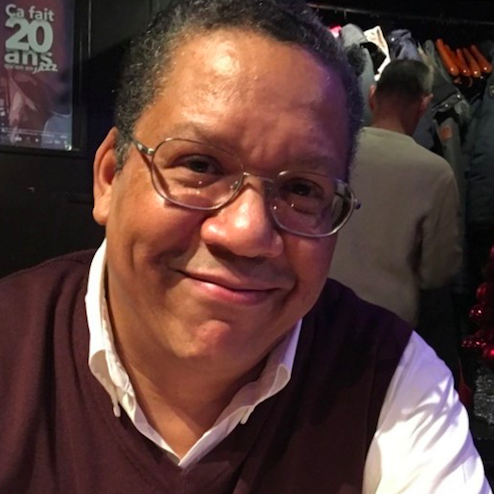
(Image: Pavel Danilyuk/Pexels)
With growing labor shortages in the United States, it is often argued that part of the solution is harnessing the experience and expertise of older workers. But workers over 40 are increasingly experiencing age discrimination in their workplaces.
Of workers who are at least 40 years old, 90 percent say they’ve experienced ageism in the workplace, according to a recent survey by Resume Now, a company that helps job seekers craft resumes. And these experiences often have negative financial and emotional consequences. For example, 49 percent of those survey said they earn less than younger colleagues, and 44 percent reported experiencing depression because of age discrimination at work. The findings are in line with other surveys about ageism.
“When we think about ageism in the workplace it’s easy to picture more blatant forms, such as refusing to hire or promote someone, making derogatory statements that create a hostile work environment, or even pressuring someone into retirement,” Keith Spencer, a career expert for Resume Now, told TriplePundit. “Ageism can also manifest in more subtle and often unconscious ways.”
For instance, people might make assumptions about someone’s skills and abilities based on their age, overlook them for development or training opportunities, or exclude them from projects or social events, he said.
“Microaggressions may also be present alongside a team or organizational culture that emphasizes youth, favoring traits like being tech-savvy or adaptable,” Spencer said. “Additionally, age-related stereotypes can surface during performance reviews or hiring processes.”
Ageism in the hiring process often stems from unconscious biases or perceptions, like the language used in job descriptions.
“Terms like ‘recent graduate,’ ‘digital native,’ or ‘energetic’ may unintentionally signal a preference for younger candidates,” Spencer said. “Similarly, focusing on years of experience rather than specific skills and expertise can disadvantage older applicants.”
Ageism can also emerge in recruitment strategies. Relying heavily on social media or campus recruitment channels, for example, may limit the diversity of candidates.
“In the application and interview process, ageism might show up through practices like emphasizing graduation dates, using AI-powered screening tools that aren’t properly calibrated, or asking inappropriate questions about retirement plans or health status,” Spencer said. “Employers may also make assumptions about a candidate’s salary expectations or apply age-based stereotypes in decision-making, such as deeming someone a poor fit for the team based on ageist perceptions. These practices, unfortunately, perpetuate age-based discrimination within the hiring process.”
Employees who have been with a company for an extended period may also see younger workers entering with higher starting salaries. There are several issues that might give rise to pay disparities in the workplace.
“This could be due to the rising cost of living or increased demand for certain skill sets,” Spencer said. “Younger workers might also have had the opportunity to negotiate higher salaries upon hiring, while the organization may not have adjusted the salaries of existing employees to reflect current market rates through annual raises.”
Professionals changing jobs could face challenges in salary negotiation due to unfair assumptions about their abilities or plans to remain in the workforce, he said.
“These ageist assumptions can create disparities and hinder equitable pay. To address these issues, it’s essential to challenge ageist views and raise awareness of unconscious biases,” Spencer said. “Promoting a workplace culture that values skills, experience, and institutional knowledge over age is key. Additionally, ensuring all employees have access to upskilling and reskilling opportunities and encouraging pay transparency can help identify and close pay gaps.”
To reserve these trends, employers should implement anti-discrimination policies with regular employee training, provide equitable access to professional development opportunities, and ensure fair hiring and promotions through diverse, transparent and objective practices, Spencer said.
“It’s important to recognize that these strategies only work if everyone — from leadership to entry-level employees — is fully committed to them,” he said. “Success begins with fostering an inclusive culture, but it also requires promoting accountability. Policies must be consistently enforced, and deeply ingrained biases need to be actively challenged.”
Some companies have already successfully fostered inclusive, age-diverse workforces using strategies like these and others, Spencer said.
“Some have implemented returnship programs to help individuals reenter the workforce after extended career breaks,” he said. “Others have established employee resource groups for various demographics, providing platforms for networking, support and advocacy.”
Spencer said he thinks there are plenty of reasons to feel optimistic about the future workforce. Increased awareness of ageism is sparking more discussions about reducing biases and addressing these issues, and recognition of the value of skills, experience and institutional knowledge is growing.
“This shift is partly driven by companies needing to adapt to rapid changes, such as technological advancements and economic shifts,” Spencer said. “As a result, there’s more appreciation for what people at all stages of the age spectrum bring to the table. I’m optimistic about the direction we’re heading.”

Gary E. Frank is a writer with more than 30 years of experience encompassing journalism, marketing, media relations, speech writing, university communications and corporate communications.














